Here are 136 SAP facts and statistics.
Did you know that 77% of the world’s transaction revenue touches an SAP system?
Or that 98% of the 100 most valued brands are SAP customers?
So if you want a massive list of SAP facts and statistics, then you’re in the right place.
Let’s kick things off with SAP fact #1!
42 SAP Basic Facts and Statistics
SAP had 50 out of the top 100 German companies as customers in 1980, 8 years after its start.
SAP’s first customer was the German branch of the ICI (Imperial Chemical Industries) in Östringen, Germany in 1972. The ICI is a British company that is now a subsidiary of Dutch major enterprise AkzoNobel.
Women make up 27.3% of SAP’s management.
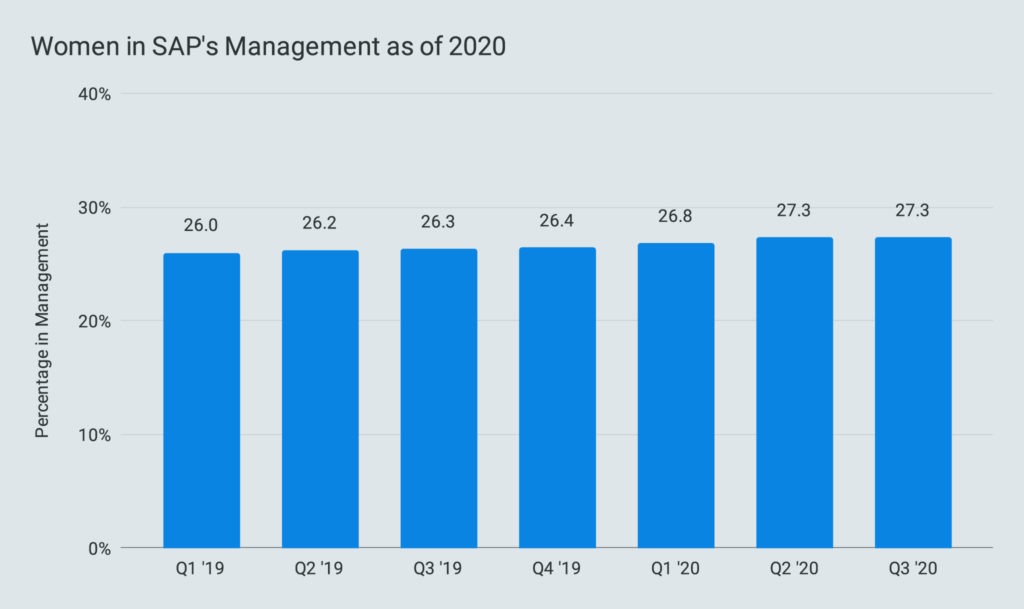
SAP bought a lot of competitors like Business Objects, Sybase, Ariba, SuccessFactors, and Concur.
SAP has 69 data centers in 35 locations in 15 countries.
SAP was founded on the idea that data needs to be processed whenever the customer needs it, rather than in overnight batches (punch cards).
SAP’s edge on their way to success was, first, that they offered standard business software instead of customized software and, second, that they made software for electronic databases instead of punch cards.
More than 73% of SAP employees are SAP shareholders.
IT professionals don’t say SAP letter by letter like S-A-P but rather SAP as a single word such as sap the fluid of a plant.
SAP has 17 Co-Innovation Labs around the world.
SAP has 20 SAP Labs around the world.
By 1975, three years after SAP was founded, SAP had applications for financial accounting, invoice verification, and inventory management.
Five former IBM employees of IBM’s German artificial intelligence division started SAP on April 1, 1972 in Germany.
SAP’s first product was SAP R/F (SAP Real-Time Financial), which they later renamed to SAP R/1 (SAP Real-Time 1 Tier), which was a financial accounting program made to be part of a bigger package.
SAP’s headquarters are in Walldorf, Germany.
SAP changed its name to “Systeme, Anwendungen und Produkte in der Datenverarbeitung” in German that translates to “Systems, Applications, and Products in Data Processing” in 1976.
SAP is #1 in the enterprise application market worldwide.
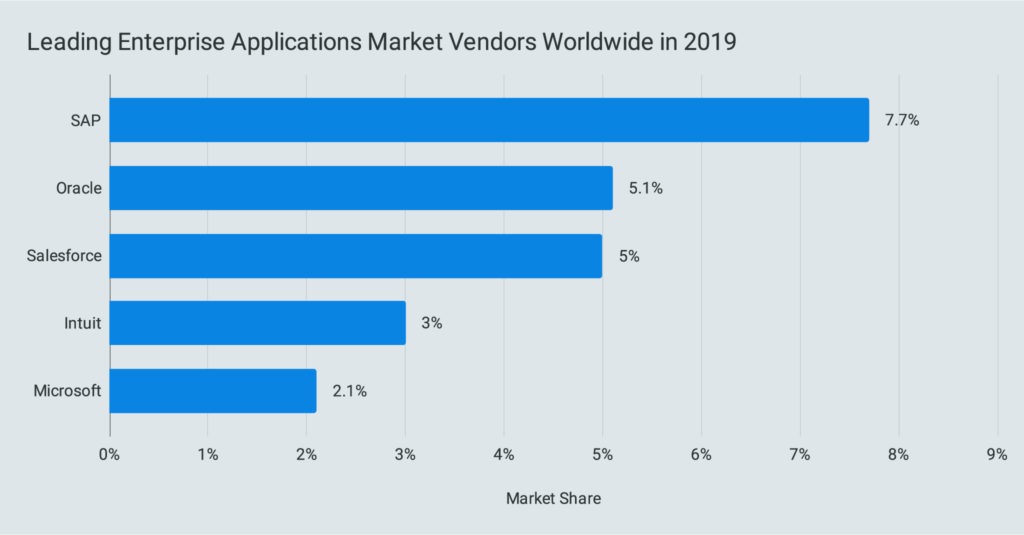
SAP is the #3 largest software company worldwide.
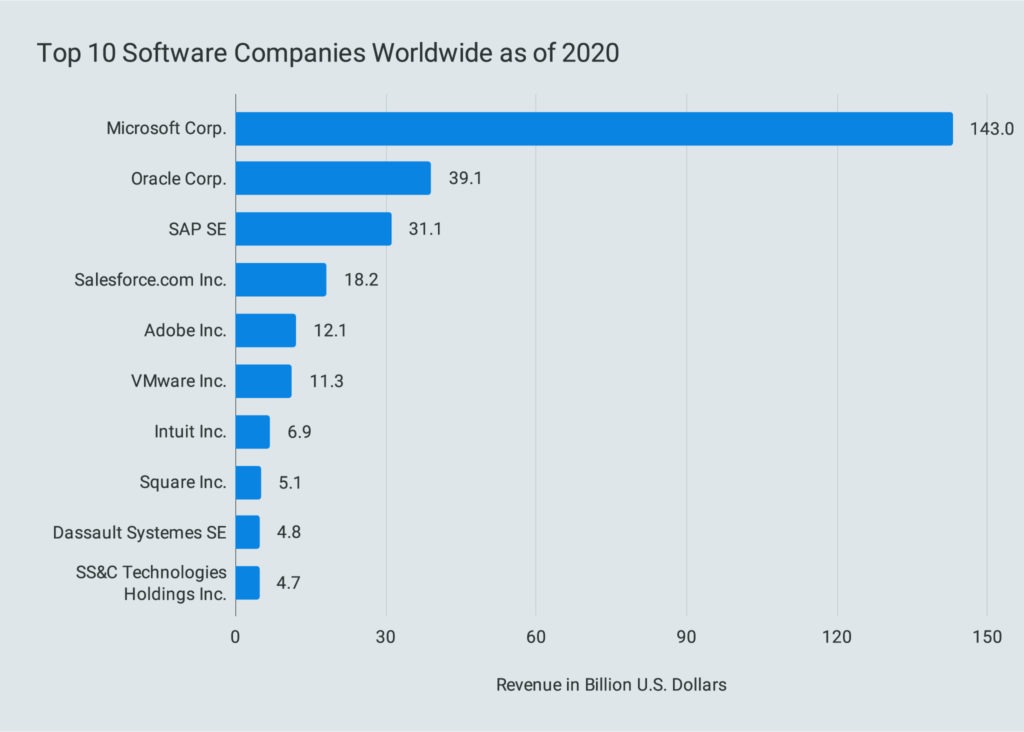
SAP is the #7 most valuable technology brand worldwide.
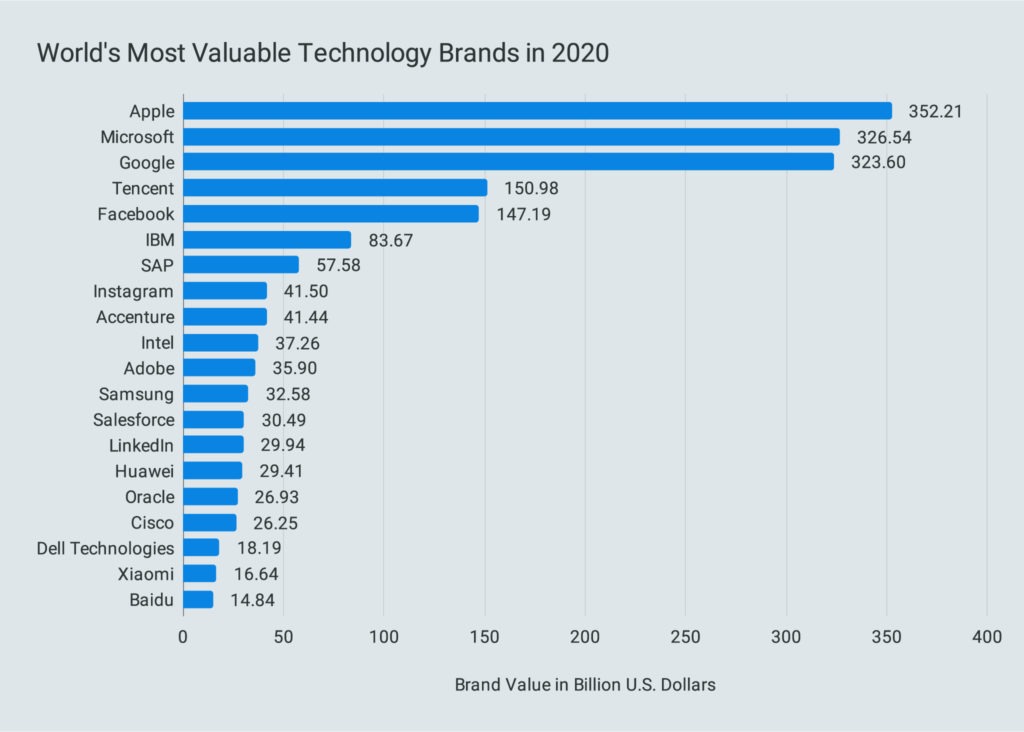
SAP is the #7 R&D (research and development) investor in the software and computer services sector worldwide.
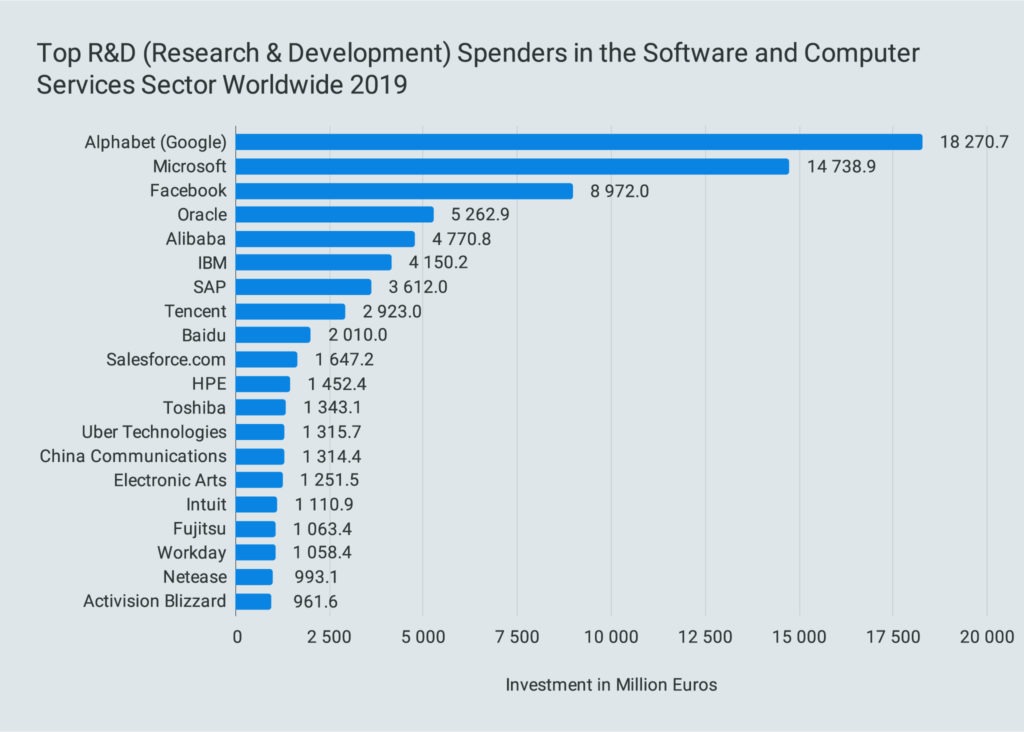
SAP went public with an IPO (Initial Public Offering) in 1988.
SAP has 100+ innovation and development centers worldwide.
SAP is the #1 in the end-to-end enterprise application software market worldwide.
SAP’s first customers were ICI’s nylon factory in Germany, Knoll, Burda, Linde, and Schott.
SAP is a partner and sponsor of the HPI FutureSOC Labs, which is supporting research at Stanford University to tackle COVID-19.
When SAP was founded in 1972, it was common to use punch cards to store data instead of electronic databases.
SAP employees are composed of 150 nationalities.
SAP exists because IBM: IBM migrated Xerox’s business systems over to IBM technology after they left the computer hardware manufacturer industry. Five IBM engineers were building an enterprise-wide system based on scientific data systems acquired by IBM. IBM told them it wasn’t needed anymore. Instead of abandoning the project, they founded SAP.
$16 trillion of consumer purchases worldwide go through SAP systems.
77% of the world’s transaction revenue touches an SAP system.
SAP has 101,450+ employees in 145+ countries as of 2020.
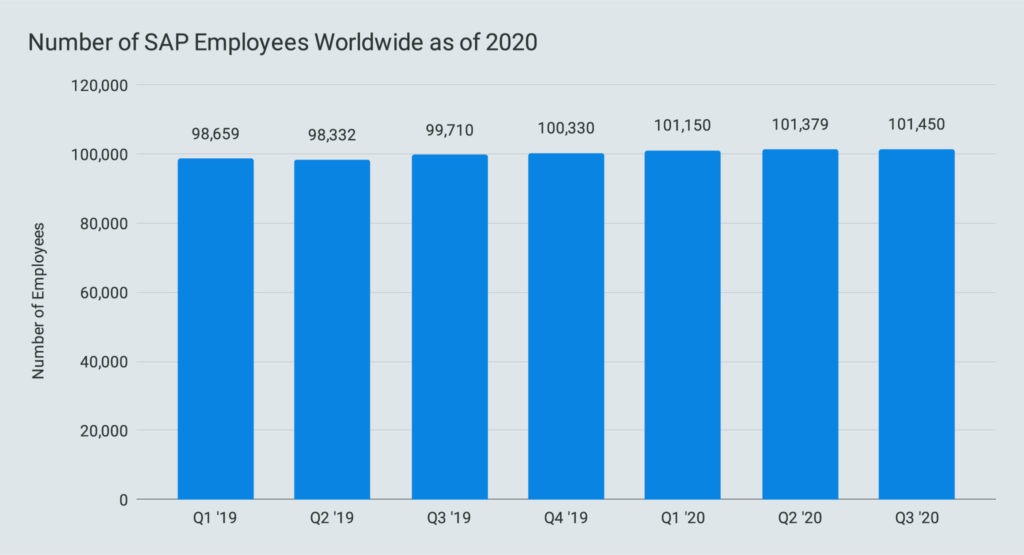
SAP is the #1 largest software company in Europe.
SAP’s research and development department has been the department with the highest number of employees.
As of 2019, around 28,000 SAP employees work in research and development.
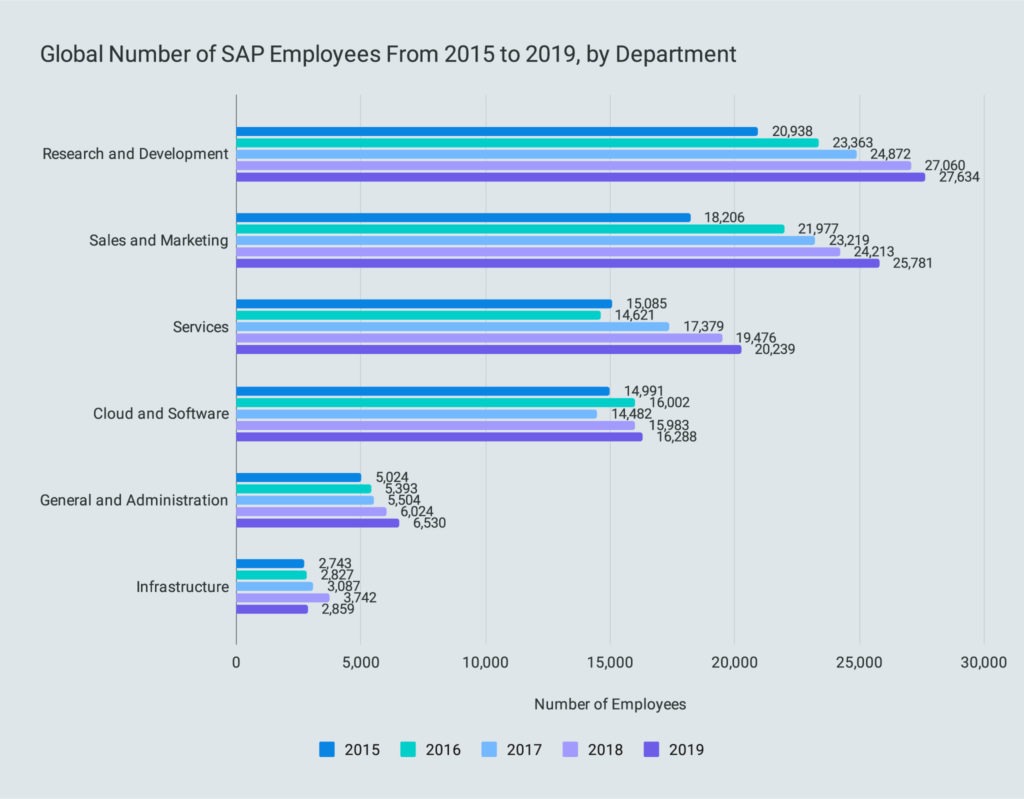
SAP has been #1 in Dow Jones Sustainability Index for 13 years.
SAP’s employee engagement index is at 86% as of 2020.
SAP granted and validated over 900 patents in 2019.
SAP’s employee retention is at 94.8% as of 2020.

SAP initially stood for “Systemanalyse und Programmentwicklung” in German that translates to “System Analysis and Program Development.”
SAP released SAP R/2 (Real-Time 2 Tier) as the successor to SAP R/1 (SAP R/F) in 1979. SAP R/2 runs on mainframe computers and includes applications for accounting, HR, manufacturing, and supply chain.
In 1980, SAP’s roughly 80 employees moved into their first office building in Walldorf, Germany.
SAP CSR (Corporate Social Responsibility) focuses on bringing innovation to global citizens by powering opportunity for all people through digital inclusion initiatives.
SAP has 21,000+ partner companies.
SAP ranks #1 in Best Employers for Diversity.

SAP is offering free access to Remote Work by Qualtrics as part of their COVID-19 Response.
33 SAP Customer Facts and Statistics
80% of SAP’s customers are small and medium-sized companies.
Top 20 prescription drugs are produced by SAP customers.
300+ participants attended SAP’s first customer conference in Lausanne, Switzerland.
64% of the world’s ice cream is produced by SAP customers.
10,242 attended the SAP TechEd 2011 Bangalore.
1.75+ billion miles travelled each year are collected as tolls by SAP customers.
78% of the world’s food is distributed by SAP customers.
98% of the 100 most valuable brands are SAP customers.
800+ million consumers live safer and healthier lives supported by SAP customers.
77% of the world’s beer is produced by SAP customers.
65% of the world’s televisions are produced by SAP’s customers.
92% of the Forbes Global 2000 companies are SAP customers.
95,000+ automobiles per day are manufactured by SAP customers.
50% of the world’s packages are couriered by SAP customers.
86% of the world’s athletic footwear are produced by SAP customers.
86% of the Global Fortune 500 companies are SAP customers.
94% of companies in the Diversity Inc. Top 50 are SAP customers.
52% of the world’s movies are produced by SAP customers.
11+ billion personalized interactions are conducted each year in the SAP Marketing Cloud.
70+ million barrels of oil are produced by SAP customers.
440,000+ (437,000+ in 2018) companies and organizations in 180+ countries are SAP customers.
101+ million active bank accounts are supported by SAP customers.
9+ million tons of the world’s cheese are produced by SAP customers.
93% of the world’s greeting cards are produced by SAP customers.
97% of the greenest companies are SAP customers.
80% of the companies on the Dow Jones Sustainability Index are represented by SAP customers.
82% of the world’s medical devices are distributed by SAP customers.
50% of the world’s brand-name jeans are produced by SAP customers.
5.2+ billion mobile subscribers across the globe are reached by SAP customers.
85% of the world’s pet food is produced by SAP customers.
70% of the world’s chocolate is produced by SAP customers.
82% of the world’s coffee and tea are produced by SAP customers.
82% of the world’s motorcycles are manufactured by SAP customers.
18 SAP Financial Facts and Statistics
SAP had a total revenue of €10.67 B in 2009.
SAP had a total revenue of €24.71 B in 2018.
SAP had a total revenue of €27.55 B in 2019.
The revenue of SAP has more than doubled between 2010 and 2019.

SAP had a cloud computing revenue of €0.1 B in 2009.
SAP had a cloud computing revenue of €4.99 B in 2018.
SAP had a cloud computing revenue of €6.93 B in 2019.
SAP had a cloud computing & software revenue of €20.62 B in 2018.
SAP had a cloud computing & software revenue of €23.01 B in 2019.

44% ($12.11 B) of SAP’s revenue is from Europe, the Middle East, and Africa.
41% ($11.19 B) of SAP’s revenue is from the Americas.
15% ($4.25 B) of SAP’s revenue is from the Asia Pacific and Japan.

The EMEA (Europe, Middle East, and Africa) region has been generating the biggest percentage of SAP’s revenue.
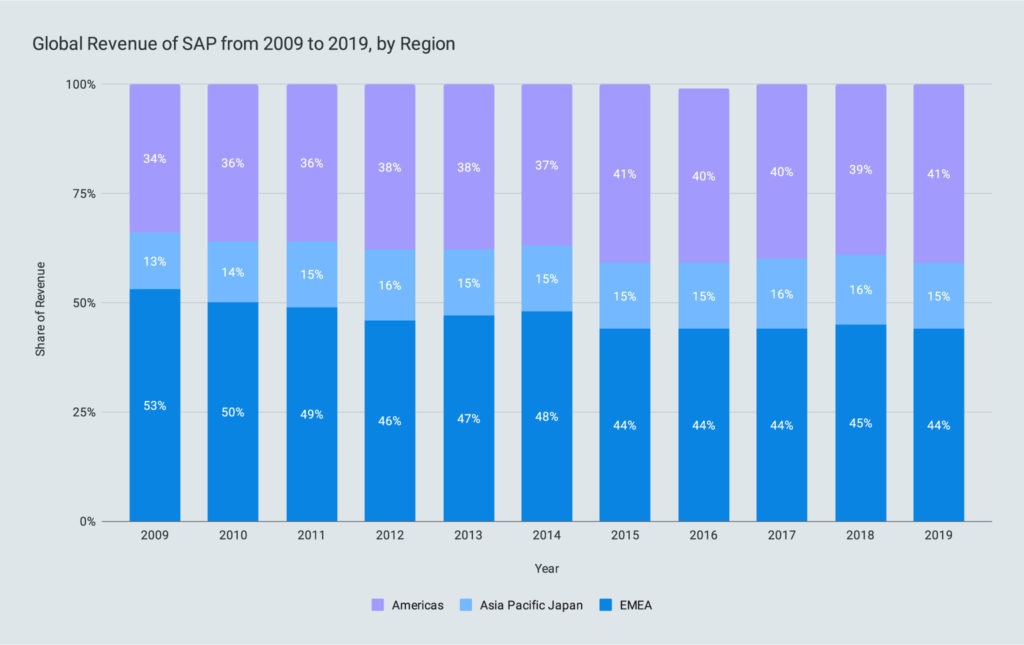
SAP had an operating profit of €4.47 B in 2019.
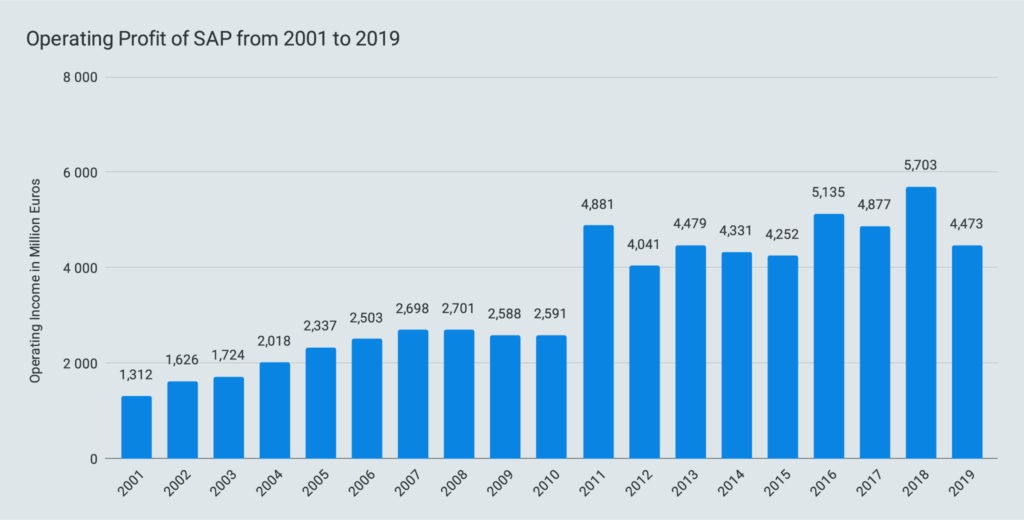
SAP had a net profit of €3.32 B in 2019.

SAP invested more than €4.2 billion in research and development in 2019.
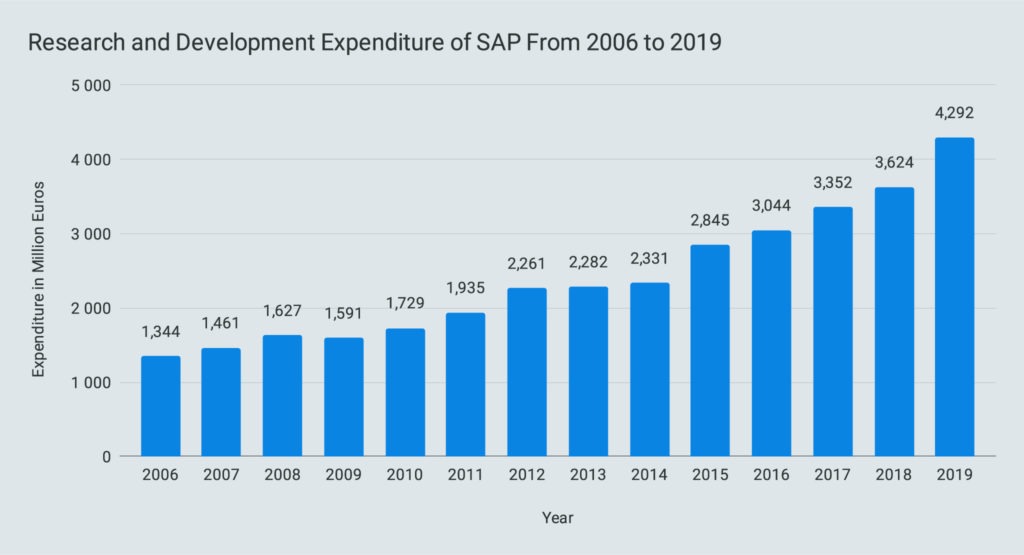
SAP invested more than €7.6 billion in marketing and sales in 2019.

SAP expects €8.3 B to €8.7 B in Cloud Revenue for 2020.
SAP expects €23.4 B to €24.0 B in Cloud and Software Revenue for 2020.
SAP expects €27.8 B to €28.5 B in Total Revenue for 2020.
SAP aims to triple their 2018 Cloud Revenue (€5.03 B) in 2023.
Free Cash Flow increased by 9% for Q1 2020.
Total Revenue increased by 7% for Q1 2020.
43 SAP Product Facts and Statistics
SAP is #4 in the CRM (Customer Relationship Management) market worldwide (SAP was #2 in 2018).

SAP is the #3 customer service application vendor worldwide.
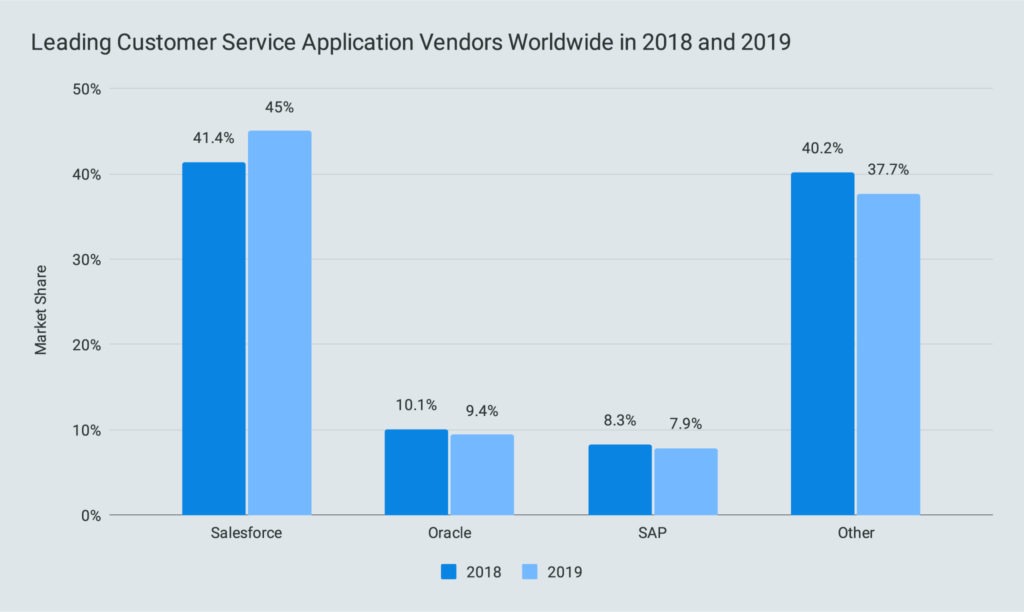
SAP is #2 in the sales force productivity and management application market worldwide.
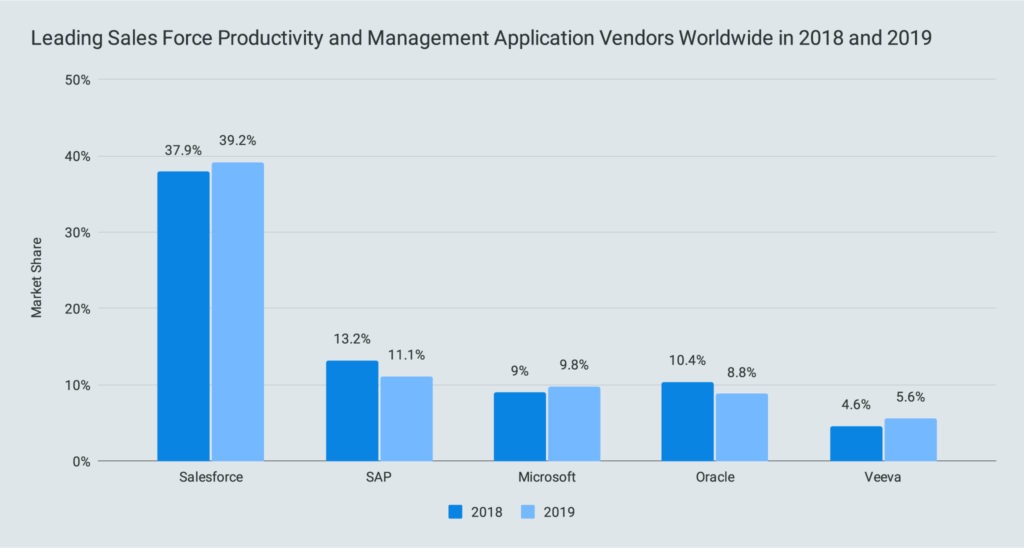
SAP is #3 in the big data and analytics software market worldwide.
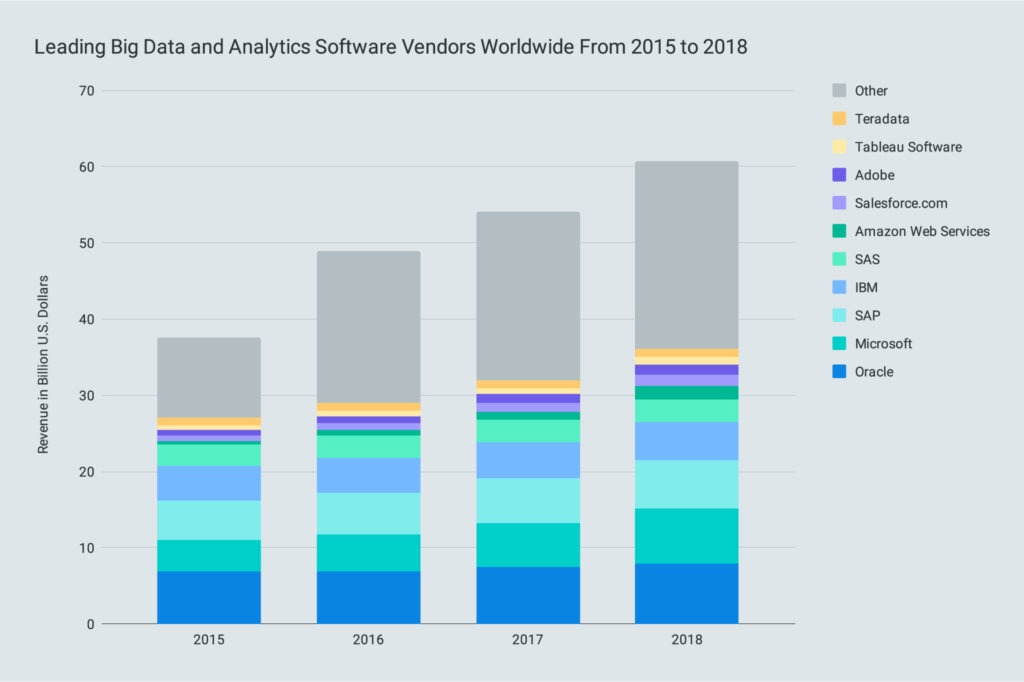
SAP is #2 in the business intelligence and analytics tools software market worldwide.
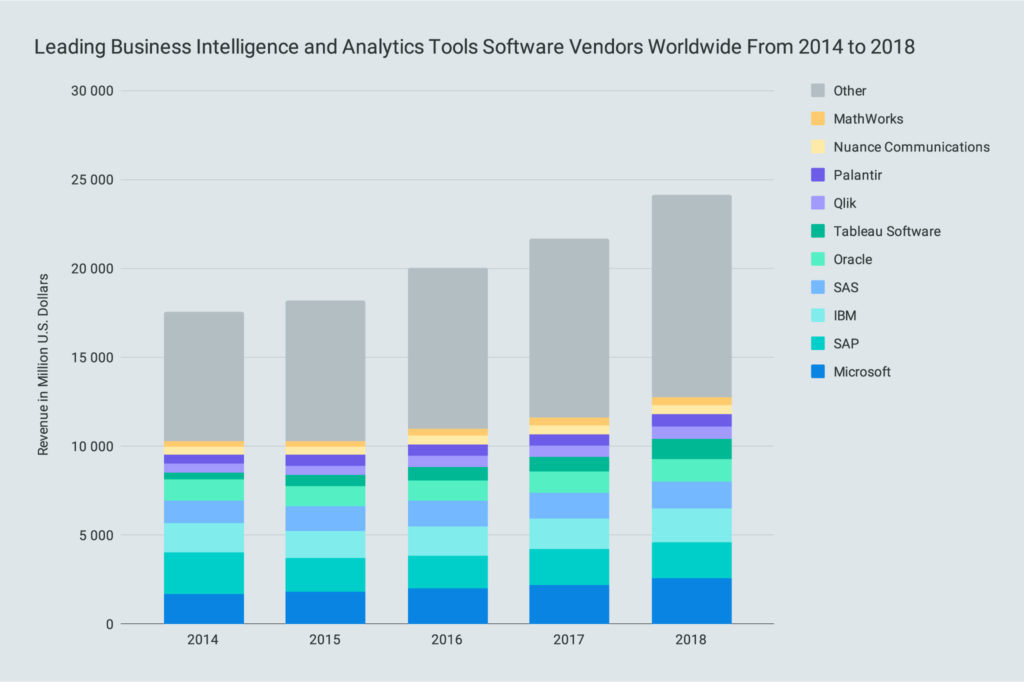
SAP is #4 in the enterprise SaaS market worldwide.
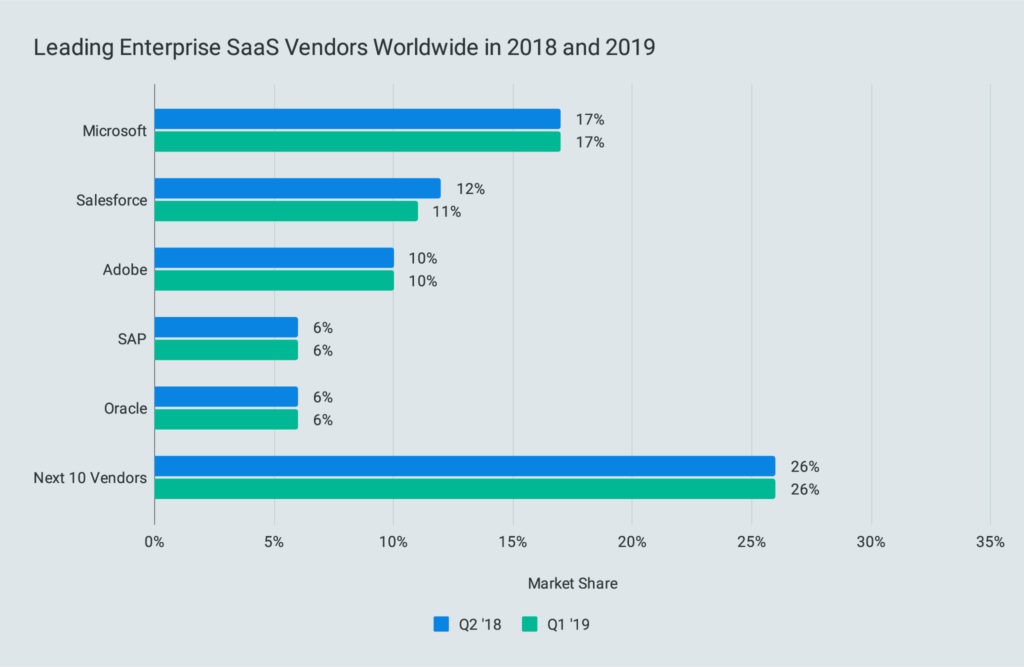
7+ million sales people use the SAP Sales Cloud.
5+ billion consent records and 2.3 billion identities are recorded in the SAP Customer Data Cloud.
66 million end users using SAP Concur.
600+ million customer interactions and tasks are recorded in the SAP Service Cloud.
$7.9+ billion worth of goods and services are traded every day through SAP Ariba.
SAP HANA can increase analysis speed by more than 10,000x, equal to walking from California to New York in 6 minutes.
200+ million SAP cloud user base subscribers.
SAP’s machine learning, Internet of Things (IoT), and advanced analytics technologies help turn customers’ businesses into intelligent enterprises.
200+ use cases for AI and machine learning in SAP’s solutions.
SAP has the largest selection of modular and suite software for on premise, cloud computing, and hybrid forms.
SAP S/4HANA is a software based on SAP HANA that can store and process huge amounts of data while significantly reducing an organization’s data footprint.
159+ million SAP SuccessFactors users.
32,400+ SAP HANA customers.
14,100+ SAP S/4HANA subscribers worldwide.
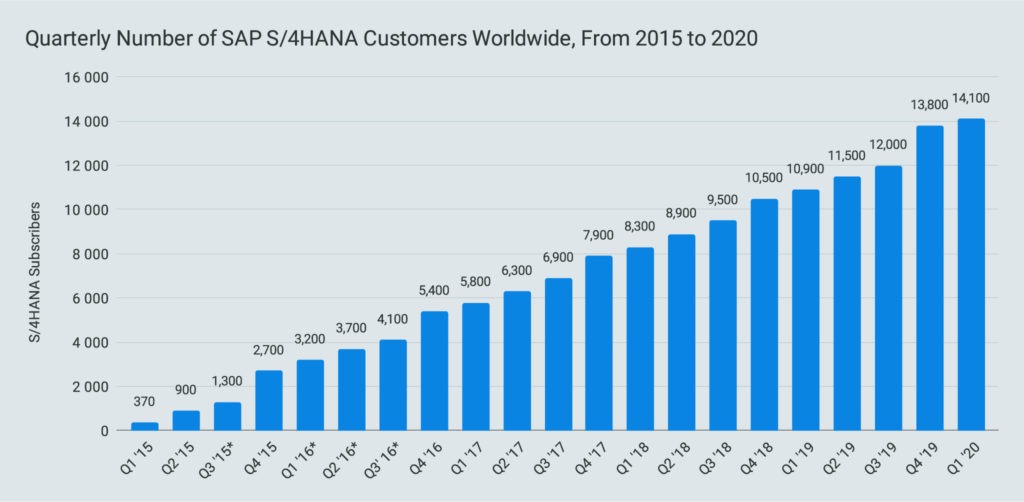
6.8+ million external workers in more than 180 countries are managed by SAP FieldGlass.
7,700+ integration customers use the SAP Cloud Platform.
SAP Cloud Platform is the choice across hyperscale cloud vendors (Alibaba, Amazon, Google, Microsoft).
31+ million orders in Q1/2020 in the SAP Commerce Cloud.
12,000+ companies use Qualtrics.
4.8+ million businesses are on SAP Ariba.
24+ million learners and 83 million current achievements are present in Litmos (learning platform).
SAP Cloud Platform is their strategic platform-as-a-service offering.
4,400,000+ companies in 190 countries are connected on the SAP Ariba network.
215,000,000+ SAP cloud computing users.
15,000+ SAP Cloud Platform customers.
SAP HANA is their in-memory computing platform that lets companies accelerate business processes, deliver more business intelligence, and simplify their IT environment.
SAP is the #1 in the SCM (Supply Chain Management) market worldwide.
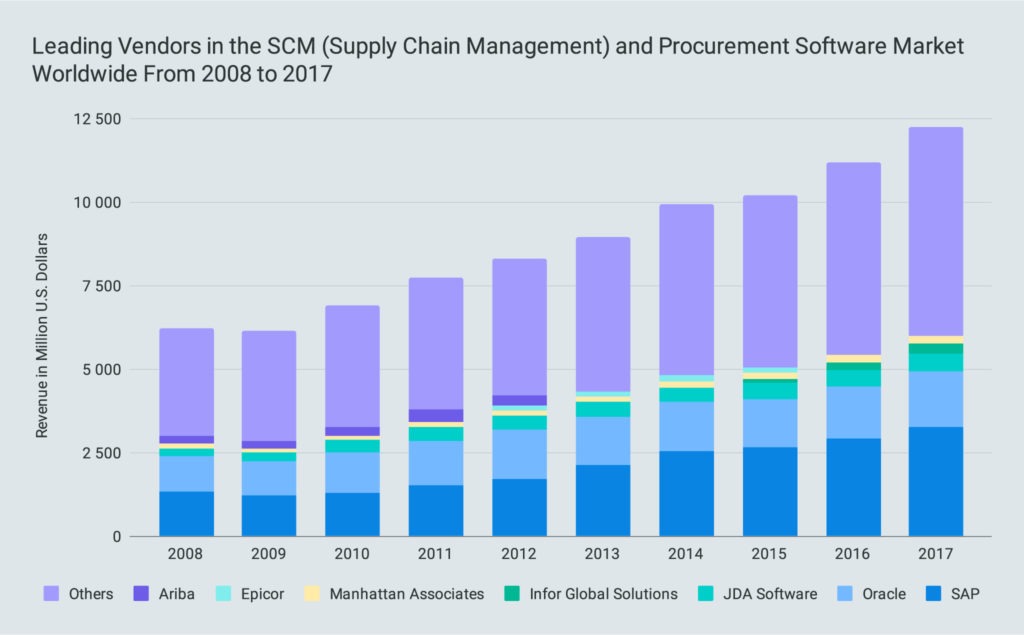
3,500+ customers use SAP SuccessFactors Employee Central.

Around 900 customers use SAP SuccessFactors HXM (Human Experience Management) Suite.
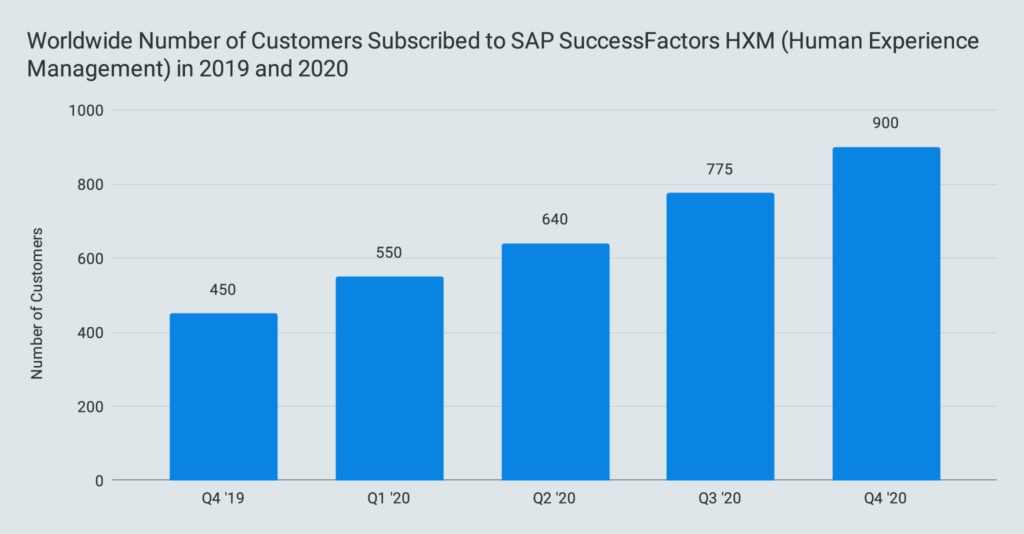
SAP is #2 in the HCM (Human Capital Management) market worldwide.
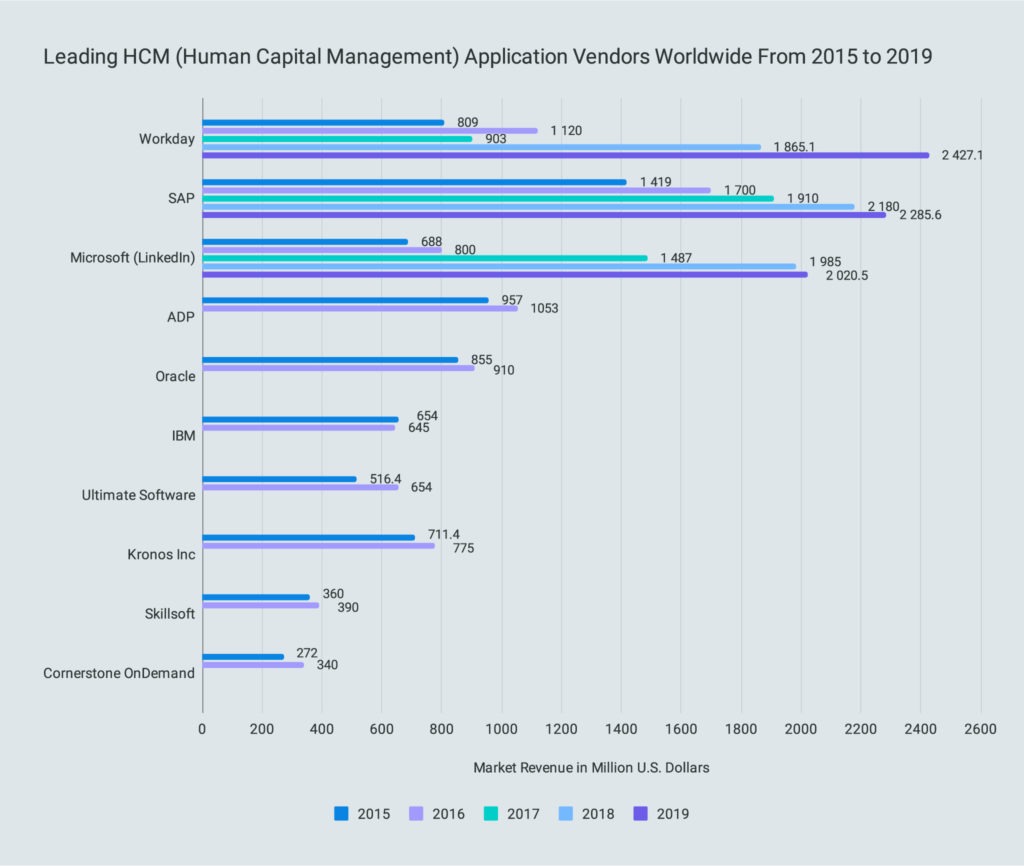
SAP responded to the Internet and new economy by launching its mysap.com strategy in 1999.
SAP branched out into three markets of the future in 2009: mobile technology, database technology, and cloud.
98+ countries are localized for SAP SuccessFactors Employee Central.
42 languages are supported by SAP SuccessFactors.

4.1+ million users are enrolled in openSAP.
SAP is the #1 in the Analytics market worldwide.
SAP Ariba is the largest business-to-business network worldwide.
SAP has industry specific software for 25 industries and 7 lines of businesses for on premise, cloud computing, and hybrid forms of both.
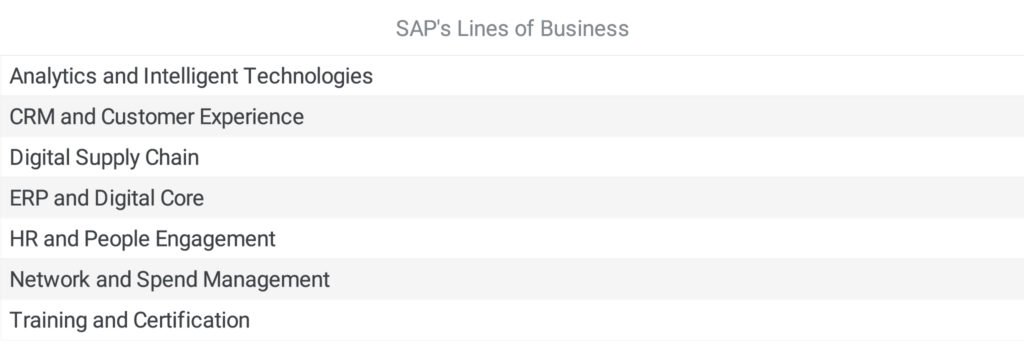
SAP has the largest cloud portfolio with 100+ solutions for all lines-of-business (LoB) as well as business suites.
35+ million people are able to work from anywhere with SAP cloud solutions.
SAP has the largest selection of cloud computing software with 100+ products.
SAP is #1 in the ERP (Enterprise Resource Planning) market worldwide.
SAP S/4HANA is the market-leading intelligent ERP.
SAP Digital Commerce for online SAP and partner offerings has 178,500+ orders from 162 countries.
For the complete picture of SAP, check out the SAP definitive guide!
Resources
Below are the resource:
AIMI Journals[0], AppsRunTheWorld[0], AppsRunTheWorld[1], AppsRunTheWorld[2], CMU[0], Deutsche Bank[0], Forbes[0], IDC[0], Investopedia[0], SAP[0], SAP[1], SAP[2], SAP[3], SAP[4], SAP[5], SAP[6], SAP[7], SAP[8], SAP[9], SAP[10], SAP[11], SAP[12], SlideShare[0], SupplyChainDigital[0], Truffle[0], Visually[0], Wikipedia[0]
Now It’s Your Turn: Add Your SAP Fact or Statistic
Do you know any SAP fact or statistic that wasn’t on the list? Then please submit it via the form below and it gets on the list so that everybody can benefit from it (thanks!).
[gravityform id=”5″ title=”false” description=”false” ajax=”false” tabindex=”1″]
